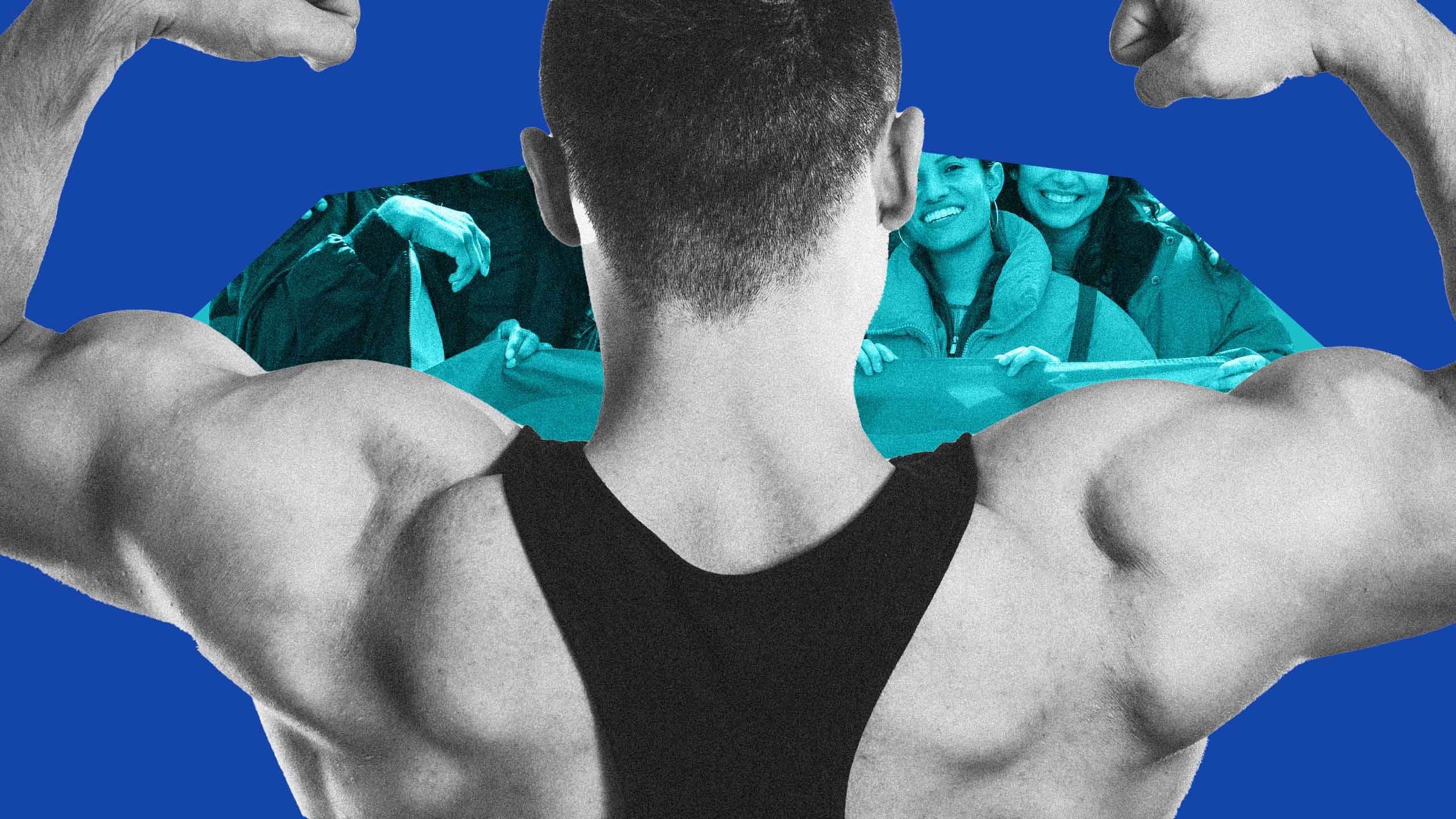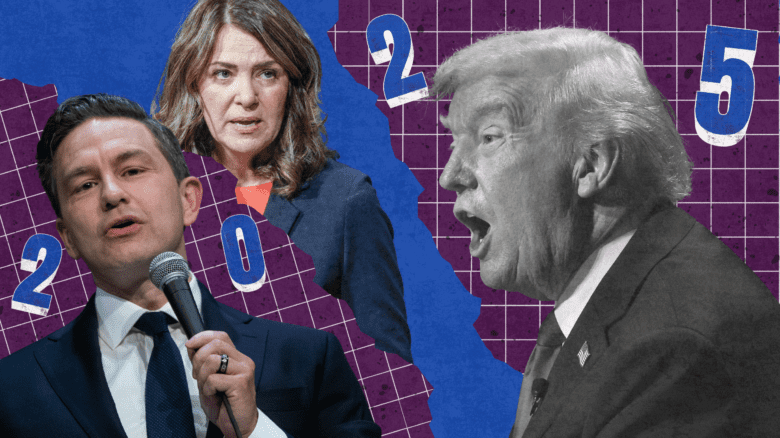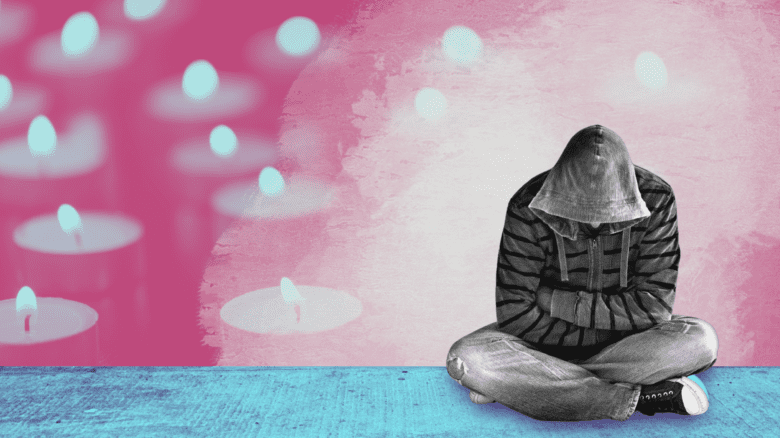There are a lot of words you could use to describe Donald Trump’s leadership style, or what he and Elon Musk have in common. That’s why it’s odd that the phrase chosen by Axios in February 2025 was “masculine maximalism.”
“Trump and Musk view masculinity quite similarly,” authors Jim VandeHei and Mike Allen wrote, defining it in terms of “tough-guy language” and “macho actions.” This definition is puzzling for a few reasons, chief among them the fact that “tough-guy,” “macho” and “masculine” are all synonyms for each other. Elsewhere, we’re told that Trump and Musk want to “let men be men,” another phrase that pointedly begs the question.
To be fair, the association of Trump with masculinity is ubiquitous: He “prizes masculinity above everything,” according to Vince Mancini at GQ. He will help America view masculinity more “positively,” according to his male supporters, as quoted by the New York Times. One especially depressing poll from Fairleigh Dickinson University, published in October 2024, found that 41 percent of all voters described Trump as “completely masculine” and 84 percent of that group planned to vote for him; moreover, among voters who do not view Trump as masculine, “his support plummets, even among Republicans.”
Meanwhile, Trump’s critics on the left try to tear him down by saying that he’s not masculine enough: “The least masculine man ever to hold the modern presidency,” according to at least one Atlantic column. He’s taunted for getting “emotional,” for wearing makeup, for showing affection to or (gasp) kissing other men, even if that last thing only happens in people’s imaginations. Liberal mockery of Elon Musk, similarly, often rests on the idea that he behaves like a woman. (“Elonia,” anyone?) Disturbingly, neither side questions the idea that “masculinity” should be a requirement in a leader, or that men who are “unmasculine” are unworthy of respect.
Yet it is true that Trumpism is a kind of gender performance—it’s about shoring up a traditional, misogynistic, dominance-obsessed ideal of “masculinity” against social progress, about restoring straight cis white men to their traditional place at the head of the family and the top of the world. Attacks on trans people, who supposedly threaten “masculinity” by existing, are very much a part of that effort.
Whether or not we as queer people believe in that kind of “masculinity,” or aspire to it, it’s gunning for us. In the hopes of understanding the enemy—and restoring some kind of nuance to a conversation that desperately lacks it—I set out to talk to transfeminists about what they think “masculinity” is and what it could become.
Our current masculinity discourse—and oh, boy, is there a lot of discourse—is muddled and unenlightening, in part because the word “masculinity” has no set definition. Every op-ed writer and self-help author and influencer who invokes the term does so with the confidence that they’re referring to a specific thing, and that they know what that thing is, but press them for details, and things get hazy: “Most people have a tendency to hem and haw and pretend that ‘masculinity’ is some nebulous, arbitrary collection of positive attributes such as ‘strength’ and ‘leadership,’ and stop replying when asked why feminine women cannot embody them,” wrote transfeminist Talia Bhatt, author of Trans/Rad/Fem: Essays on Transfeminism.
One enlightening definition of masculinity, from the Axios article, is that it’s “unmoved by emotionalism, empathy or restraint,” and prone to “humiliate the humbled”—specifically, in this case, trans people. Musk has famously declared war on the “woke mind virus,” seemingly in an effort to humiliate and discipline his estranged trans daughter, and Trump signed a whole flotilla of anti-trans executive orders the moment he took office.
Which is to say: Masculinity, in this conversation, is a euphemism for dominance—specifically, domination of women and queer people. The emotions of powerful white men are given tremendous importance, and allowed to dictate national policy. It’s the victims’ feelings that don’t matter; it’s empathy for them that is being denied. This carries over to the attempts to come up with a softer, more “positive” masculinity: “Strength” and “leadership” sound like nice qualities, but they are both synonyms for being in charge.
“Everyone is incredibly euphemistic when talking about ‘masculinity,’” Bhatt tells me in an email. “When talking about how women ‘challenge’ men’s masculinity by showing too much autonomy, intelligence, or independence or discussing the cultural media’s current favourite fixation in ‘the crisis of masculinity,’ everyone is talking around the fact that masculinity is defined antagonistically.”
The crux of the matter, says Bhatt, is that “men are not supposed to be like women.” In this analysis, masculinity is simply the code men use to set themselves above women, and anything that recognizes women’s humanity endangers it; talking about masculinity is just a cute way to avoid talking about patriarchy and male domination.
Bhatt writes that she is skeptical of attempts to differentiate “positive” and “toxic” masculinity, which, she says, tend to portray violence and misogyny as tragic deviations from “real” manliness, rather than the norm and intended outcome of patriarchy. As long as masculinity is defined antagonistically, in terms of having more power than someone else, then subjugation and oppression will be essential to its performance.
Is it possible to create a coherent idea of masculinity without invoking dominance of women, children and queer people as part of that package? Possibly. The first step is measuring the distance between that kind of masculinity and how men actually live.
As a trans guy, my resistance to traditional definitions of masculinity is raw and personal: if you define “man” as a person with unquestioned patriarchal power, then I am not one. I do certain things to make myself read more “masculine”—stand a little wider, drop my voice—and I’m on “masculinizing” hormones that have made my chest hairier and my upper body stronger. Yet being a trans person, even a white trans man, is hardly a position of unqualified gender privilege, and most people who hate women still hate me. There are masculine people who aren’t men; there are masculine people who are women. How are they the beneficiaries of patriarchy, given that they are some of its primary victims?
The problem extends beyond queerness. It’s very difficult, for example, to argue that a Black man’s perceived masculinity benefits him in the same way a white man’s does—stereotypes of hypermasculinity are leveraged to cast Black men as inherently dangerous and violent, whereas for white men, being “masculine” is supposedly about self-control. Middle-class and wealthy men are able to define masculinity in terms of “breadwinning” or “providing”—euphemisms for out-earning their female partners—but working-class men often depend on their wives’ paycheques. Are those men not masculine (which seems unlikely, given that fetishization of True Blue-Collar Masculinity is one of the few things right- and left-wing politics have in common) or are they just doing masculinity in a different way?
The trick lies in separating hegemonic masculinity—the traditional, dominance-based masculinity of ruling-class whiteness, which is presented to us as both the norm and the ideal—from all those other masculinities, or just the everyday practice of making oneself legible as a man.
If masculinity is not an eternal essence, but a survival strategy, then we can adapt in ways that better secure our survival.
One scholar who has been thinking about this for a long time is the Australian sociologist Raewyn Connell. In her 1995 book, Masculinities, Connell—who coined the term “hegemonic masculinity,” and is one of the founders of masculinity studies—surveyed several groups of men, from male feminists to working-class biker gangs, and found that each group had wildly different ways of establishing their masculinity. Those masculinities were often about power, including power over women, but each set negotiated it differently; the bikers, for instance, were brutally misogynistic when talking about sex partners, and some of them hit women, but they didn’t mind staying home to take care of children while partners worked. The male feminists were very concerned about renouncing male power, but the ways they expressed this—like refusing to initiate sex with their girlfriends, on the grounds that adult women were too psychologically fragile to handle their partners being attracted to them —could be paternalistic.
In all that research, masculinity—the single, monolithic ideal—was nowhere to be found. “What is ‘normative’ about a norm hardly anyone meets? Are we to say the majority of men are unmasculine?” Connell wrote. Masculinity was not a single coherent code, but a constant negotiation with one’s social and political context.
Under these terms, Donald Trump or Elon Musk don’t represent “masculinity”—they represent a masculinity: a historically right-wing one. “The historians tell us that the fascist movements of the first half of the 20th century got their crucial initial support from very young men,” Connell tells me in an email. “The idealization of an aggressive, self-confident, masculine leader—Mussolini was the first and most successful, in terms of length of time in power—gave the fascist movement staying power, capacity to mobilize more than one generation.”
To concede that fascists have a monopoly on masculinity is dangerous. The best response, Connell suggests, is to point out all the other masculinities that have emerged around and despite them: “I think the most helpful line here might be about the emerging forms of masculinity that contradict the power-oriented, aggressive themes of right-wing masculinities,” Connell says. Fascist power politics tend not to work out well for anyone, men included. If masculinity is not an eternal essence, but a survival strategy, then we can adapt in ways that better secure our survival. If masculinity is about context, then our contexts—and our masculinities—can change.
Masculinity is, indeed, many things in 2025, and one of them is a hustle. In the past few years, we’ve seen a deluge of content that promises to “re-examine masculinity”—NYT op-eds and TED Talks and Netflix miniseries and PR tours. The idea that this all started with an Australian trans woman doing academic field research is vaguely shocking. Nor has that rigour carried over to pop-masc discourse, which, at its best, suffers from the confusion of trying to talk about gender without a feminist power analysis, and at worst, actively runs away from feminism to provide tortured self-apologia from male abusers or barely disguised MRA talking points about men being victimized by feminist progress.
It can be impossible, given the sheer glut of material, to find a genuinely enlightening book on the topic. I’ve found two, and they’re both by author, journalist and TV writer Thomas Page McBee.
McBee has been on the masculinity beat for a long time. His column, “Self-Made Man,” ran on The Rumpus from 2012 to 2015, and he was the resident “masculinity expert” for VICE starting in 2013. “Intimate conversations about being a man have been rare,” McBee wrote in his first VICE column, which was occasioned by a male grooming company convening a panel-slash-dinner at Momofuku. Having those conversations felt significant, even as he also “hoped we were actually doing something more significant than helping some assholes sell shaving products.”
MEL Magazine—the publication that probably did the most to make masculinity talk trendy on the left, owned and operated by a company that sells shaving products—was launched in 2015 with a mostly cis staff. (Masculinity writing is apparently razor ads all the way down.) Yet McBee’s work was not just masculinity writing— it was transmasculinity writing, and that’s worth noting, especially since trans men have been erased from much of the ensuing coverage.
McBee never intended to pigeonhole himself by talking about transness—he tells me he had a fairly classic “I was always a boy” experience of dysphoria that made it easy for him to relate to cis men—but wanted to use it to shed a light on how gender works for everyone: “We have this mirror-like quality where we can say, here’s what my experience is of masculinity, and aren’t I coming at this with fresh eyes?” he says in a phone call. “Many people don’t remember the experience of being socialized in their gender. Most people didn’t have frontal lobes when they had that experience and can’t really engage with it, you know?”
At first, the approach was working: “Honestly, it was kind of awesome the first few years I was writing about it, because I felt like it was connecting in a universal way,” McBee says. However, as the conversation proceeded, it got louder and less substantive: “A lot of what I was told by people who were very familiar with this kind of research and space, and who had a lot of success in these conversations, wasn’t really practised once those conversations got brought into the mainstream.” The “online-ification” of the masculinity discussion, as McBee puts it, bled out any nuance: “It just became political fodder and another culture war issue, and it was disappointing, honestly, to watch that happen.”
Revolutions get co-opted, yet McBee’s work is revolutionary. Getting men to realize that they have a gender, and that they have a say in how they enact it—just as we don’t blink at women identifying as women without needing to embody a 1950s-era tradwife aesthetic—is really hard, and he’s really good at it. In his work, rejecting dominance politics does not have to be a theatrical, self-sacrificing performance, but simply an insistence on living as you see fit: “To be able to be freely yourself—who doesn’t want to live that way?” McBee asks me. “If you’re constantly under the sway of having to prove [your masculinity] and to dominate, and everything is about fitting in, there’s a way that’s so undermining of your own freedom, your own bodily autonomy. And who benefits?”
If “masculinity” is about holding unquestioned patriarchal power, and most men or masculine people do not have that kind of power, then who benefits from that arrangement? If men are kept in a state of perpetually aspiring to “masculinity,” and perpetually failing—buying rulebooks and workout programs and testicle-tanning packages and, yes, shaving products, all to embody a gender that was supposedly theirs to begin with—then who gains, other than the forces of capital, keeping “masculinity” out of reach and selling it back a crumb at a time?
What’s at the heart of most masculine performance is not power, or even gender, but a perpetual suffocating anxiety about not performing one’s gender correctly.
In their 2023 book, The New Masculinity, non-binary author and AskMen.com editor Alex Manley wrote that they gained a crucial insight into men’s lives while providing masculinity-branded content: “Headlines that implied the reader was doing something wrong, had something wrong with him or was unforgivably unaware of something important seemed to get better results than those that didn’t,” Manley wrote. “People visit websites for all kinds of reasons, but the reason men visited ours was because they were afraid.”
What’s at the heart of most masculine performance is not power, or even gender, but a perpetual suffocating anxiety about not performing one’s gender correctly. No wonder no one can come up with a definition of “masculinity”—it’s not an object, but a void where an object should be, a negative that must be proven in each new interaction. The quintessential experience of being a man is wondering if you’re really a man; it’s always acting like a man and never actually getting to be one.
To be clear, the ideals of “manhood” and “womanhood” set forth by the gender binary are both impossible for any one person to embody. Men’s gender insecurity, though, is prone to being manipulated toward fascist ends; strongman “leaders” can vicariously embody the cartoonish, inflated “masculinity” that men understand themselves to be lacking. In the end, Trump is just another set of shaving products: he’s a way to buy back an assurance of “masculinity” in a world where no one’s masculinity is assured.
Though our cultural anxiety around “masculinity” may never fade—masculinity is anxiety—there is more than one way to use it. Some people cling to violence or try to swim back to a simpler, safer past that never existed. Some use their gendered discomfort as an invitation to explore. If trans people have any gift to give the conversation about masculinity, it’s just that: we are used to feeling uncomfortable with traditional ideas about how gender works, and used to asking questions that lead us to new and better places. We know how to embody genders the world tells us are impossible. We know that, if gender doesn’t work, it can change.


 Why you can trust Xtra
Why you can trust Xtra


